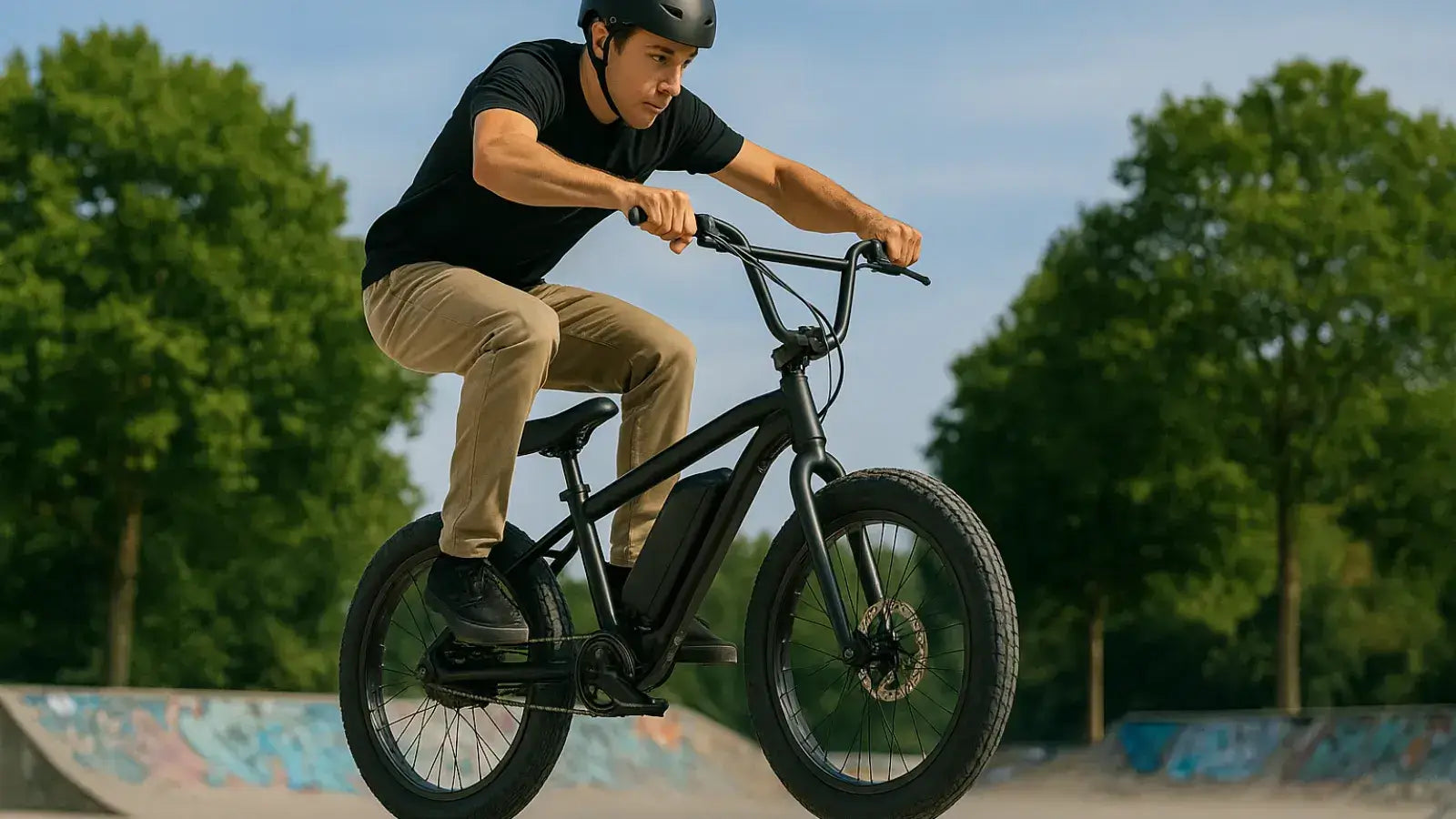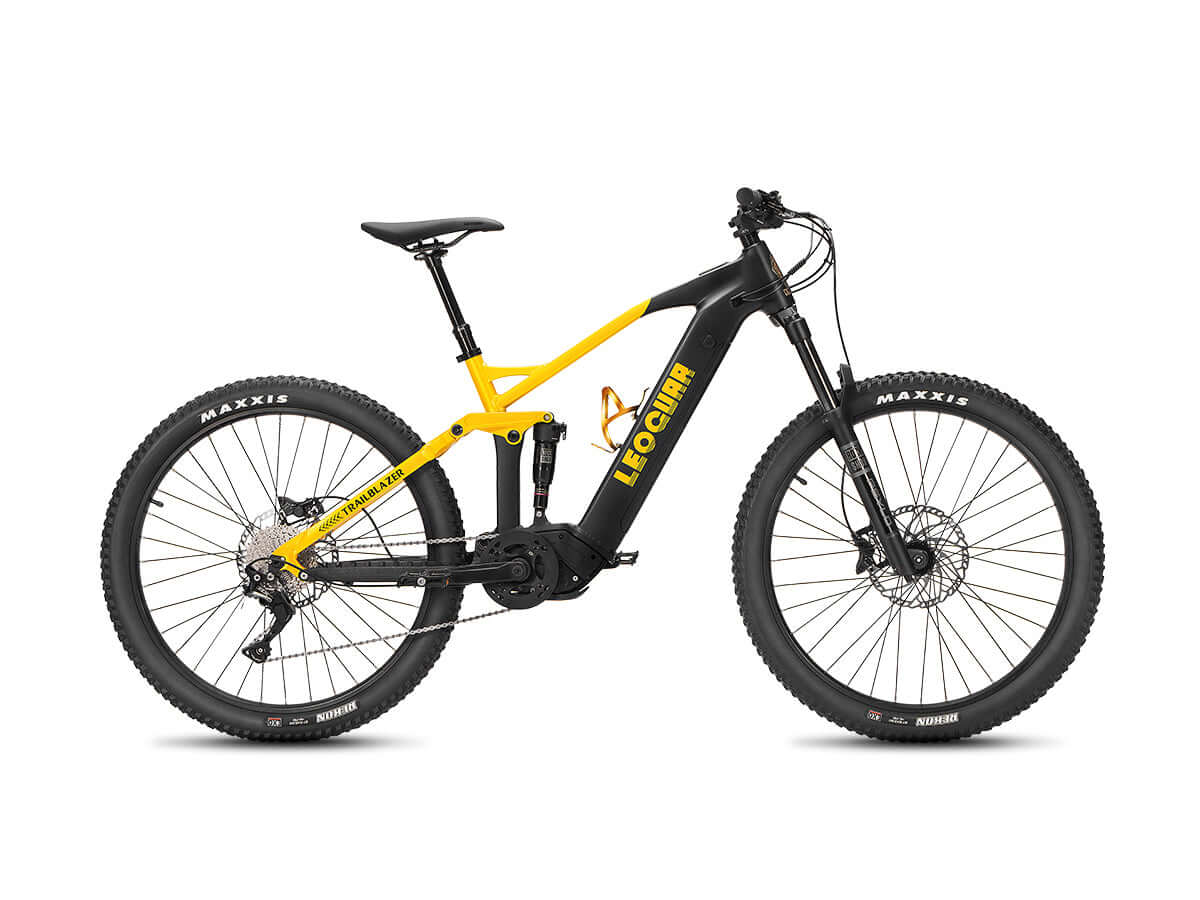
Do You Really Need a 1000 Watt Electric Bike Daily?
The Appeal of High-Power E-Bikes
A 1000 watt electric bike has undeniable appeal. It offers peak power and promises easy speed with amazing hill-climbing ability. However, as you consider this choice for your e-bike journey, an important question comes up: is all that power useful for daily life, or is it expensive overkill that's too complicated? Many riders face this tough decision every day. This guide cuts through the marketing hype to give you clear, balanced facts. We'll examine performance, benefits, drawbacks, real uses, and legal issues of 1000W e-bikes so you can make a smart choice.
Understanding the Power
What does a 1000W motor actually give you? In e-bikes, watts measure power - how fast the motor uses energy. Think of it like a car's horsepower. Higher wattage usually means higher speeds and faster acceleration. But power isn't everything in this equation. You also need to think about torque, which is measured in Newton-meters.
If watts are horsepower, torque is the raw strength or twisting force. It gets you moving from a stop and pulls you up steep hills. A 1000W motor almost always has high torque (often 80Nm to 100Nm or more), making a strong combination. Here's what that power and torque give you in real life:
- Acceleration: A 1000 watt electric bike gives instant, exciting acceleration from a complete stop. This is especially clear when pulling away from traffic lights or joining a bike lane.
- Top Speed: While laws limit them in many places, an unrestricted 1000W e-bike can usually reach speeds between 28 and 40 mph on flat ground. This depends heavily on rider weight, terrain, and battery power.
- Hill Climbing: This is where high wattage really shines. Steep hills that would make riders on 250W or 500W bikes pedal hard, or even walk, can often be climbed with little effort, sometimes using throttle alone.
- Battery Requirements: Power needs energy. To maintain this performance, 1000W motors work with large, high-voltage batteries, typically 48V or 52V systems with capacities from 15Ah to over 20Ah.
The Case for Power
For the right rider in the right place, the benefits of a 1000W system are life-changing. It's not just about speed; it's about capability and beating limits that would stop a less powerful bike.
Unmatched Hill-Climbing Ability
For riders living in cities like San Francisco or dealing with rolling hills in rural areas, this is the top benefit. A 1000W motor turns mountains into small bumps, making sure you reach your destination without being soaked in sweat. It removes geography as a barrier to commuting.
Rapid Acceleration
In stop-and-go city traffic, getting up to speed quickly is a major safety and convenience feature. You can easily keep up with traffic flow from a standstill, making you more predictable and visible in the transportation mix.
Heavy Load Hauling
If your e-bike is your main utility vehicle, a 1000W motor is a huge asset. It can handle extra weight from a week's groceries, a child in a rear seat or trailer, or heavy work equipment without losing performance. The motor does the work, not your legs.
High-Speed Commuting (Where Legal)
For those with long commutes on roads where higher speeds are allowed, a 1000W bike can realistically replace a car. The ability to maintain speeds of 28 mph or more can dramatically reduce travel time compared to standard Class 1 or 2 e-bikes limited to 20 mph.
Enhanced Off-Road Performance
For trail riders and adventurers, extra power means you can blast through challenging terrain. A 1000W motor helps keep momentum through soft sand, sticky mud, or even snow, opening new possibilities for exploration where a standard mountain bike would struggle.
The Reality Check
While the power is exciting, it comes with major trade-offs that are crucial to understand before buying. For many everyday riders, these cons can outweigh the pros.
Legal and Regulatory Hurdles
This is perhaps the most important consideration. In the United States, most e-bike rules are based on the three-class system used in the U.S., which typically maxes out at a 750W motor. A 1000 watt electric bike often falls outside these classes. This can legally classify it as a moped or unregistered motor vehicle, making it subject to different laws, including possible requirements for a license, registration, and insurance. Also, these bikes are often banned from multi-use paths and bike lanes, severely limiting where you can ride.
Increased Weight and Reduced Portability
More power means a bigger motor and a much larger, heavier battery. A 1000W e-bike can easily weigh 70-90 lbs or more. This makes it seriously challenging to carry up stairs to an apartment, lift onto a car's bike rack, or move in tight spaces. If you need to move your bike regularly, this added weight can be a deal-breaker.
Higher Battery Consumption and Shorter Range
A powerful motor uses lots of energy. While these bikes have large batteries, using the full 1000W of power will drain that battery much faster than a more efficient 500W or 750W system. If you ride aggressively, your expected range could be cut in half, potentially leaving you with a very heavy, unpowered bicycle to pedal home.
Higher Purchase Price and Maintenance Costs
High-performance parts cost more money. A reliable 1000W e-bike costs significantly more than 500W or 750W bikes. The stress from the powerful motor also puts more wear on parts like the chain, cassette, and brakes, leading to more frequent and costly maintenance over the bike's life.
Potential Safety Concerns for Inexperienced Riders
The raw acceleration and high top speed can be overwhelming and genuinely dangerous for beginners. A moment of accidental throttle twist can launch the bike forward unexpectedly. Learning to control and brake a heavy, fast machine takes practice and respect for its capabilities.

Real-World Scenarios
To move beyond a simple list of pros and cons, let's look at how a 1000W e-bike fits into different riders' lives. We've seen these situations play out many times. For some, it's the perfect tool; for others, it's the wrong choice.
| Rider Profile | Primary Needs | Is a 1000W Bike a Good Fit? | Key Consideration |
|---|---|---|---|
| The Urban Commuter (Flat City) | Portability, efficiency, legal path access | Overkill | The heavy weight makes carrying it into an office or apartment difficult, and the power is unnecessary for flat terrain. A lighter 500W bike is far more practical. |
| The Suburban Hill-Climber | Effortless hill climbing, long-distance comfort | Excellent Match | This is the ideal user. The power negates steep hills on a daily commute, making the e-bike a viable car replacement regardless of the local topography. |
| The Cargo Carrier / Parent | Hauling capacity, consistent power under load | Ideal Choice | For those using an e-bike to haul groceries, packages, or a child, the 1000W motor ensures that performance doesn't suffer when the bike is fully loaded. |
| The Off-Road Adventurer | All-terrain capability, power for sand/mud/snow | Strong Contender | The power is a huge benefit for conquering tough trails. The main trade-off is the bike's weight, which can make it harder to handle on technical singletrack. |
| The Food Delivery Pro | Speed, acceleration, durability, range | Excellent Match | For a delivery rider we spoke to, the ability to accelerate quickly from a standstill and maintain high speeds between stops was a game-changer, directly increasing their daily earnings. The key is balancing speed with a large enough battery for a full shift. |
Finding Your Power Level
It's easy to focus on the biggest number, but the truth is that "more" isn't always "better." Most riders find their sweet spot not at 1000W, but in the more balanced 500W and 750W range. In fact, extensive testing from leading reviewers shows that most top-rated all-around e-bikes have motors between 250W and 750W, as this range gives the best balance of performance, weight, legality, and efficiency for most people.
A high-quality 750W motor can feel surprisingly strong and tackle nearly any hill a typical commuter will face. The difference between a 750W and 1000W motor is often only felt at the absolute extremes - very steep, long hills or when trying to achieve the highest possible top speed. For 95% of daily riding situations, a 750W bike offers all the power you need without the major downsides of a 1000W system.
Here's a direct comparison to help you understand the options:
| Feature | 500W Motor | 750W Motor | 1000W Motor |
|---|---|---|---|
| Best For | General commuting, moderate hills, efficiency | All-around performance, steep hills, some cargo | Extreme performance, very steep hills, heavy loads |
| Top Speed (Assisted) | ~20-24 mph | ~20-28 mph (Class 2/3) | 28+ mph (Often unregulated) |
| Hill Climbing | Good | Excellent | Exceptional |
| Battery Efficiency | Higher | Medium | Lower |
| Weight | Lower | Medium | Higher |
| Cost | Lower | Medium | Higher |
| Legality | Generally compliant with Class 1/2/3 | Generally compliant with Class 1/2/3 | Often falls outside legal e-bike classes |
The Final Verdict
So, do you really need a 1000 watt electric bike for everyday use? For a select group of users with specific, demanding needs, the answer is definitely yes. If you are a delivery professional, live at the top of a tough hill, or use your bike to haul heavy cargo daily, investing in a 1000W system can be life-changing.
However, for most riders, a 1000W e-bike is overkill. The gains in power are often overshadowed by major drawbacks in weight, cost, legality, and complexity. A high-quality 750W e-bike represents the peak of practical, legal power for most people, offering fantastic hill-climbing and acceleration without the compromises.
Before you make your decision, ask yourself these questions:
- What does my daily terrain actually look like?
- Will I need to lift or carry this bike regularly?
- Where will I be legally allowed to ride?
- Is my primary goal efficiency and range, or raw power and speed?
Ultimately, the best electric bike isn't the one with the most watts; it's the one that fits seamlessly into your life and riding style. Use this guide to look past the numbers and choose the power level that truly works for you.
Frequently Asked Questions
Q: Is a 1000W e-bike legal to ride on bike paths?
A: In most areas, 1000W e-bikes fall outside standard e-bike classifications and may be prohibited from bike paths and lanes. They might be classified as mopeds, requiring registration and limiting where you can ride. Check your local laws before purchasing.
Q: How much does a quality 1000W e-bike typically cost?
A: Quality 1000W e-bikes typically cost significantly more than lower-wattage models, often ranging from $2,500 to $5,000 or more. The higher price comes from more powerful motors, larger batteries, and stronger components needed to handle the increased power.
Q: What's the real-world range of a 1000W e-bike?
A: Range varies greatly based on how you use the power, but expect 20-40 miles on a full charge with mixed riding. Using full power constantly will drain the battery much faster, potentially cutting range in half compared to more efficient riding.
Q: Can a beginner safely ride a 1000W e-bike?
A: While possible, 1000W e-bikes can be overwhelming for beginners due to their powerful acceleration and high speeds. New riders should consider starting with a lower-wattage bike to develop skills and confidence before moving to high-power systems.
Q: How much do 1000W e-bikes typically weigh?
A: Most 1000W e-bikes weigh between 70-90 pounds due to larger motors and bigger batteries. This extra weight makes them much harder to carry, lift onto bike racks, or maneuver in tight spaces compared to lighter, lower-wattage models.









































Leave a comment